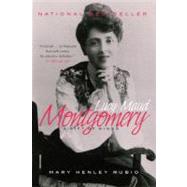
Lucy Maud Montgomery The Gift of Wings
by Rubio, Mary Henley-

This Item Qualifies for Free Shipping!*
*Excludes marketplace orders.
Buy New
Rent Book
Used Book
We're Sorry
Sold Out
eBook
We're Sorry
Not Available
How Marketplace Works:
- This item is offered by an independent seller and not shipped from our warehouse
- Item details like edition and cover design may differ from our description; see seller's comments before ordering.
- Sellers much confirm and ship within two business days; otherwise, the order will be cancelled and refunded.
- Marketplace purchases cannot be returned to eCampus.com. Contact the seller directly for inquiries; if no response within two days, contact customer service.
- Additional shipping costs apply to Marketplace purchases. Review shipping costs at checkout.
Summary
Author Biography
Table of Contents
The PEI Years 1874—1911
The Leaskdale Years 1911—1926
The Norval Years 1926—1935
The Toronto Years 1935—1942
Epilogue
Acknowledgements
Endnotes
Select Bibliography
Index
Excerpts
In November 1907, Lucy Maud Montgomery wrote to a friend that biography is a “screaming farce.” She added that the best biographies give only two-dimensional portraits, but every person has a half dozen “different sides.” In 2008, one hundred years after the publication ofAnne of Green Gables, we know much more about the many sides of “Maud,” as she liked to be called. And in fact many now feel that Maud’s greatest literary creation was her own tortured selfportrait, now published in her private journals more than fifty years after her death. But the truth may be even more complicated than that.
Maud’s life feels at times like a smoke-and-mirrors game. By 1920, when her name was famous all over the English-speaking world, Maud began preparing material for those who would later interpret her life. She compiled scrapbooks, account books, review-clipping books, and a multitude of other memorabilia. Although she was (in her son’s words) a “packrat” by nature, this material was also intended as a cache of information for those who would later become her biographers. She carefully recopied her journals, starting in 1919, making an edited, permanent copy.Shesaw her journals as her greatest gift to future biographers: they presented her life asshewanted it remembered.
When Elizabeth Waterston and I began editing the L. M. Montgomery journals in the 1980s, we took them at face value. Later we came to question elements in these fascinating lifedocuments. They did not holdthetruth, we felt, so much asatruth. These journals, frank in so many ways, and so rich as social history, began to seem to us a cache of concealments, displacements, contradictions, and omissions. Initially, they seemed such a boon, but eventually they became another layer to excavate through. This biography will track some of my own processes, as well as my conclusions. In the nearly three decades that she has been the object of my parttime research I have never grown bored with Maud. She is truly a biographer’s dream subject: you never feel that you have found the master key thatfullyunlocks all the rooms in her house.
In 1908, Lucy Maud Montgomery burst onto the literary scene with her first novel,Anne of Green Gables. At age thirtythree, she had already published scores of short stories and poems, but this bestselling novel achieved instant acclaim, with seven impressions printed in its first year alone. It churned up so much attention that her home province, Prince Edward Island, soon had a flood of visitors, all wanting to see the landscapes she painted so vividly. Her publisher demanded sequels, and she obliged, eventually making her beloved Island a site for tourists from all over the world. Her books appeared to be “simple little tales” (to echo her own modest phrasing in a journal entry dated October 15, 1908), but that was misleading: the last quarter century of scholarly research has shown that her writing has been, in fact, a very powerful agent of social change.
Anne of Green Gableswas not written as a novel for children. It was aimed at a general audience of adults and children, men and women, sophisticates and simple readers, as were many of her other books. It appealed to famous statesmen as much as to ordinary people. In 1908, the celebrated author Mark Twain wrote Maud to praise “Anne” as “the dearest and most moving and delightful child since the immortal Alice.” In 1910, Earl Grey, one of Canada’s most beloved Governors General and an esteemed writer himself, travelled to Prince Edward Island just to meet her. In 1923, she was the first Canadian woman to be elected as a member of the British Royal Society of Arts.
By 1925, translations into other languages were expanding her reade
Excerpted from Lucy Maud Montgomery: The Gift of Wings by Mary Henley Rubio
All rights reserved by the original copyright owners. Excerpts are provided for display purposes only and may not be reproduced, reprinted or distributed without the written permission of the publisher.
An electronic version of this book is available through VitalSource.
This book is viewable on PC, Mac, iPhone, iPad, iPod Touch, and most smartphones.
By purchasing, you will be able to view this book online, as well as download it, for the chosen number of days.
Digital License
You are licensing a digital product for a set duration. Durations are set forth in the product description, with "Lifetime" typically meaning five (5) years of online access and permanent download to a supported device. All licenses are non-transferable.
More details can be found here.
A downloadable version of this book is available through the eCampus Reader or compatible Adobe readers.
Applications are available on iOS, Android, PC, Mac, and Windows Mobile platforms.
Please view the compatibility matrix prior to purchase.
